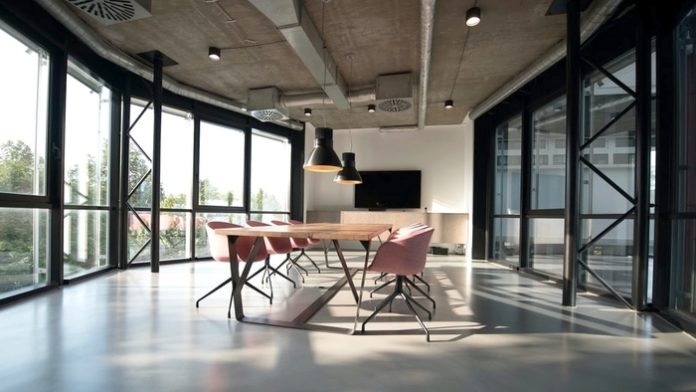Can we find an economic and socially viable path to the new normal? In its latest webinar the British Council for Offices (BCO) brought together a panel of experts from the South West to discuss what might be the ‘new normal’ and how businesses can be best placed to make workspaces enticing and viable post COVID-19.
The webinar was chaired by BCO’s South West Committee Chairman and Partner at commercial real estate firm Cushman & Wakefield, Andy Heath, who was joined by Emma Dowden, COO of independent UK law firm Burges Salmon, John Wright, Director at architectural practice Stride Treglown and Matt Heaman, Partner at engineering consultancy firm Hoare Lea.
Emma kicked things off with an explanation of the five stages for companies embarking on the process of bringing workforces back into offices: ‘Resolve, Resilience, Return, Re-imagination and Reform’. Whilst each component presents its own set of challenges, Emma acknowledged that it also provides businesses the opportunity to evaluate the way they work for the better.
Emma explained that she believes the return to work will be “slow and measured” and that beyond a consideration of how much space a firm realistically needs, office design will have to be reviewed with agile working and online collaboration in mind, as two of the key, long-lasting shifts in workplace culture as a result of COVID-19.
Commenting on the market in general, she continued: “Agile working will no doubt become the norm for most businesses, however, I predict that we will see the adoption of a hybrid model. A company will always need an HQ, but we’ll see more emphasis on office hubs together with higher levels of home working.”
Commenting on the change in design processes that could emerge in a post COVID-19 workplace, John’s comments centered on ‘reimagination’ and the need for companies to focus on their people as the most valuable assets.
John explained that lockdown has allowed firms to learn a huge amount about their staff and how they can work. Whilst resultant benefits of home working include increased ‘quiet time’ to concentrate, reduced commuting and efficient virtual meetings, John highlighted the negatives such as the absence of impromptu brainstorms, casual team-building conversations and the ability to spot someone struggling.
“I expect the post-lockdown office to be more adaptable, responsive and suited to task-based work settings,” John commented.
“There will be more virtual meeting facilities and bespoke designs that allow workers to choose to work alone or in groups.”
Matt talked webinar attendees through the mechanical and operational considerations that come with ensuring office spaces are set-up to reduce the possible transmission route of the virus via ventilation systems.
Office ventilation heat recovery installations must be reviewed, he explained, and where practical the fresh air rate per person increased to lessen the spread of infected airborne particles. Initially, occupancy levels will be reduced and this will increase the amount of fresh air per occupant. Efforts to reduce contamination must be put above comfortability in the office environment, which could mean unfavourable office temperatures for staff.
Technological advances for basic office functions will matter, too, Matt advised.
“No-touch sensor devices will be crucial to the adaptation of office spaces post-lockdown,” he said.
“From doors and lifts to taps and soap dispensers, these swaps will make all the difference in reducing transmission rates by removing points of physical contact.”
Commenting on the webinar, Andy Heath, said: “It is essential for businesses to take responsibility for the wellbeing of their staff in the wake of this pandemic, and clearly this means adapting from the norm.
“I’d like to thank everyone who joined us on our webinar and our speakers John, Emma and Matt for raising important points as we forge ahead in these uncertain times.”






















